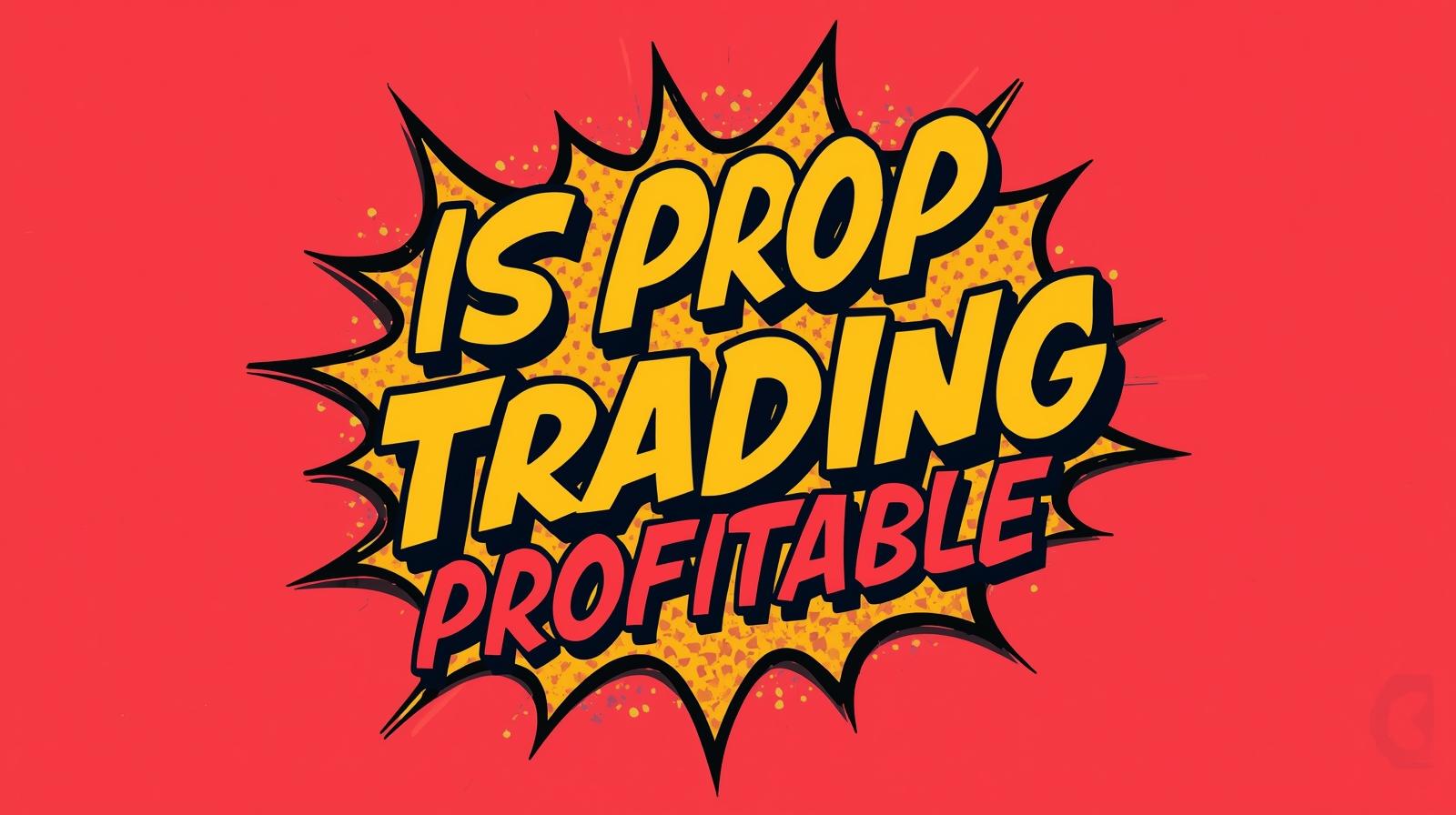
The proprietary trading landscape continues to evolve rapidly, presenting both opportunities and challenges for traders seeking significant returns on investment. As we look toward 2025, understanding the profitability potential of prop trading becomes increasingly important for anyone considering this career path. This comprehensive analysis examines the realistic ROI expectations, market conditions, and key factors that will influence prop trading profitability in the coming years.
Understanding Prop Trading Profitability Fundamentals
Proprietary trading, or “prop trading,” involves trading financial instruments using a firm’s capital rather than client funds. The fundamental question—”Is prop trading profitable?”—depends on numerous variables that we’ll explore in detail. Unlike traditional trading careers, prop trading offers unique profit-sharing structures that can amplify returns when executed skillfully.
Think of prop trading like being handed the keys to a high-performance sports car. The vehicle (capital) belongs to someone else, but your driving skills (trading ability) determine how well it performs. If you navigate successfully, both you and the car owner benefit substantially.
What Makes Prop Trading Potentially Profitable?
The potential profitability of prop trading stems from several key advantages:
- Access to significant trading capital beyond personal means
- Reduced personal financial risk compared to self-funded trading
- Professional trading infrastructure and technology
- Profit-sharing models rather than flat commissions
- Opportunity to scale with performance
For traders who develop consistent strategies, prop trading can provide returns significantly exceeding what’s possible with personal capital alone. The profit-sharing model creates a powerful alignment between trader and firm interests.
2025 ROI Projections: What to Realistically Expect
When analyzing expected returns for prop trading in 2025, we must consider both historical performance data and emerging market trends. Typical monthly returns for successful prop traders currently range from 5-15%, though these figures vary substantially based on strategy, market conditions, and individual skill.
Average ROI Benchmarks for Different Trading Styles
By 2025, ROI projections will likely differ based on trading approach:
- Day Trading: 5-20% monthly returns for consistently profitable traders
- Swing Trading: 3-15% monthly returns with lower daily time commitment
- Algorithmic Trading: 3-10% monthly with potential for greater stability
- Discretionary Macro Trading: 3-12% monthly with higher capital allocation
These projections assume traders have passed initial evaluation phases and are trading funded accounts. Remember that these figures represent successful traders, not industry-wide averages which include those who fail to maintain profitability.
How Market Conditions Affect 2025 Prop Trading Profitability
Market volatility serves as the lifeblood of prop trading profitability. The 2025 landscape will likely be shaped by:
- Continued central bank policy adjustments affecting interest rate environments
- Geopolitical developments creating trading opportunities
- Technological advancements altering market structure
- Regulatory changes impacting trading parameters
Is Prop Trading Profitable? 2025 ROI Analysis
Is Prop Trading Profitable? 2025 ROI Analysis
Historically, periods of moderate to high volatility have generated the most favorable conditions for prop trading profitability. Markets that move—regardless of direction—create opportunities for skilled traders to extract value.
Prop Firm Business Models and Profit Potential
Understanding various prop firm structures is essential when evaluating potential ROI. The 2025 prop trading ecosystem will likely continue featuring these primary models, each with distinct profitability implications.
Challenge-Based Firms vs. Traditional Prop Shops
Challenge-based firms (often called “funded trader programs”) have dramatically changed the prop trading landscape. These firms charge evaluation fees in exchange for the opportunity to earn funded accounts upon meeting performance metrics. In contrast, traditional prop shops typically hire traders directly after rigorous assessment.
The profitability comparison for 2025:
- Challenge Firms: Lower barrier to entry but typically offer 70-90% profit splits with scaling opportunities
- Traditional Prop Shops: Higher barriers to entry but may offer better capital allocation, infrastructure, and potentially more favorable profit splits ranging from 50-80%
By 2025, we’ll likely see continued evolution of these models, with hybrid approaches becoming more common as the industry matures.
Risk-Adjusted Returns: The True Measure of Profitability
When evaluating prop trading profitability for 2025, focusing solely on percentage returns provides an incomplete picture. Risk-adjusted returns—measuring how much risk was required to generate profits—offer a more realistic assessment.
Key Risk-Adjusted Performance Metrics
Successful prop traders in 2025 will focus on these critical metrics:
- Sharpe Ratio: Aim for 2.0+ for consistently profitable strategies
- Maximum Drawdown: Keeping below 10-15% of account equity
- Win Rate: While less important than risk-reward, 45%+ typically indicates strategy robustness
- Profit Factor: 1.5+ suggests sustainable profitability
Think of risk-adjusted returns like fuel efficiency in a car. Two vehicles might both reach 60 mph, but the one consuming less fuel (risk) for the same performance demonstrates superior efficiency. Similarly, two traders might both achieve 10% monthly returns, but the one doing so with lower drawdowns and more consistent performance has the truly superior approach.
Challenges to Prop Trading Profitability in 2025
Despite the potential for substantial returns, several factors will continue challenging prop trading profitability through 2025:
Increasing Algorithmic Competition
As algorithms and machine learning systems continue evolving, certain market inefficiencies will become increasingly difficult for discretionary traders to exploit. By 2025, successful prop traders will likely need to:
- Develop unique edge through specialized market knowledge
- Incorporate quantitative elements into discretionary approaches
- Focus on markets or timeframes less dominated by algorithms
- Adapt strategies more frequently as market conditions evolve
Regulatory Considerations Affecting ROI
Evolving regulations will likely impact prop trading profitability through 2025, with potential changes to:
- Capital requirements for prop firms
- Tax treatment of trading profits
- Market structure rules affecting execution
- Cross-border trading restrictions
Staying informed about regulatory developments and adapting accordingly will be essential for maintaining profitability.
Maximizing Prop Trading ROI: Strategic Approaches for 2025
For traders seeking to optimize returns in the 2025 prop trading environment, several strategic approaches will likely prove valuable:
Specialization vs. Diversification
The debate between specializing in one market versus trading multiple instruments continues evolving. By 2025, successful approaches will likely include:
- Market Specialization: Developing deep expertise in specific instruments (e.g., S&P E-mini futures, EUR/USD, specific equity sectors)
- Strategy Diversification: Applying consistent methodologies across multiple correlated markets
- Timeframe Adaptation: Adjusting holding periods based on volatility regimes
The most profitable prop traders typically develop specialized knowledge while maintaining enough flexibility to adapt to changing conditions—a balance that will remain crucial through 2025.
Capitalizing on Emerging Market Opportunities
By 2025, several evolving market segments may offer enhanced profit potential for prop traders:
- Climate-related markets and carbon trading
- Digital asset markets as they mature and develop more institutional characteristics
- Emerging market currencies during periods of policy divergence
- Niche equity sectors undergoing structural transformation
Identifying these opportunities early while applying disciplined risk management will likely distinguish the most profitable prop traders.
ROI Comparison: Prop Trading vs. Alternative Investments
When evaluating prop trading profitability for 2025, it’s helpful to compare expected returns against alternative investment approaches:
- Prop Trading (successful traders): 40-120% annual returns possible but with significant time commitment and skill requirements
- Traditional Stock Market Investing: 7-10% long-term average returns with minimal time requirements
- Hedge Fund Investing: 10-15% target returns for top-performing funds
- Real Estate: 8-12% annual returns including appreciation and income
This comparison highlights why prop trading attracts performance-oriented individuals—the potential returns significantly exceed most passive alternatives, though with correspondingly higher skill requirements and time commitment.
Conclusion: Is Prop Trading Profitable in 2025?
The question “Is prop trading profitable?” will continue having the same answer in 2025 as it does today—it depends entirely on the trader. For disciplined, skilled individuals who develop and maintain an edge, prop trading will likely remain among the most potentially lucrative financial careers available, with annual returns far exceeding most alternative investments.
However, these returns come with significant caveats: substantial time investment, continuous learning requirements, and the psychological resilience to handle inevitable drawdowns. The 2025 prop trading landscape will reward adaptability, risk management excellence, and specialized knowledge more than pure technical skill.
For those weighing entry into prop trading, the potential ROI justifies the effort required—but only for those committed to treating it as a serious professional endeavor rather than a speculative venture. The prop traders who will thrive in 2025 are those building systematic approaches today, focusing on risk-adjusted returns rather than headline numbers, and continuously adapting to evolving market conditions.
The path to prop trading profitability remains challenging but potentially rewarding for those with the right mindset, discipline, and strategic approach.







